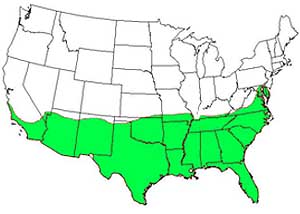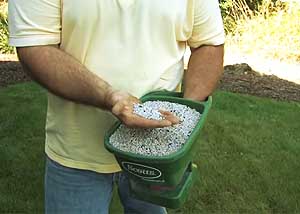Easy Tips On How to Get Bermuda Grass to Spread
Bermuda grass, aka Cynodon Dactylon, is a warm-season grass that can grow on almost all soil types. Is one of the most popular and common types of grass in the USA. And while it’s widespread in most of the country, this plant is mostly found in the eastern hemisphere.
Its medical properties and the good, fast-growing rate is what makes the devil’s grass such a popular choice among many lawn owners.
However how to get bermuda grass to spread is a whole other matter, that not a lot of lawn owners are aware of. Thus, we’ve decided to investigate this topic further and share with you everything we know and learned about Bermuda grass and how to get it to spread.
Growing Bermuda Grass: What You Should Know?

The best way to grow the Bermuda grass is via sodding over bare dirt. Plugging or sprigging is also fine, but seeding takes too much time, so it’s best to avoid this method.
Now, the first thing you need to learn when you want to learn how to get Bermuda grass to spread, is what season and month is the best time for it. While this is a pretty sturdy plant that can be laid throughout the year, the best time to plant and spread Bermuda grass seed is in May.
Another thing a lot of people often wonder is does Bermuda grass spread without water? And the answer is no since Bermuda grass has a vibrant root system of stolons and rhizomes that spread out both above and below the ground.
| Strengths | Drought and heat resistance (making it a great grass for southern states), deep rooting potential and durability |
| Weaknesses | Shade tolerance and frequent mowing requirement |
| Recommended Mowing Height | 1-2 inches for home lawns using rotary mower |
| Recommended Mowing Frequency | For home lawns, weekly using a rotary mower |
| Fertilization Requirements | 0.5 to 1 lb N per 1000 square feet per month during the summer growing season |
Bermuda Grass Grow Habits
Another thing you need to keep in mind is how fast does Bermuda grass spread compared to other warm-season varieties. It has one of the fastest growth rates, and the flowering occurs in late summer. It is valued for its extreme heat and drought tolerance and it prefers moist and warm climates with a lot of light, which makes it the best grass for South Carolina and other warmer regions.
Bermuda Grass Pros and Cons
Pros:
- Best full-sun grass
- Very heat and drought resistant
- Hardy and durable
- When well maintained, it looks gorgeous
Cons
- Turns brown in the winter
- Requires the most nitrogen fertilizer during the summer to keep it green, as compared to other turfgrasses
- Prone to invade your flowerbeds
- May go dormant without water in drought conditions
How Does Bermuda Grass Spread?
It spreads by both above-ground stems called stolons and below-ground stems known as rhizomes. Just do keep in mind that its aggressive growth rate makes it difficult to manage.
After planting it, you must be pondering on how to make Bermuda grass spread. In addition to the maintenance calendar, you should consider:

- Insemination time: The best time for insemination is between January to March.
- Cultivation: Springtime, with its warm temperatures, is the most suitable time to plant spread the Bermuda grass. So if you live in warmer parts of the country, opt for March and April, to spread Bermuda grass. Moreover, it can grow in almost all soil types and will even tolerate salt spray, making it a good option for coastal regions.
- Soil condition: A soil pH ranging between 5.8 and 7.0 is ideal but it can also tolerate more alkaline soil conditions. But in alkaline soil, you should regularly apply lime to help the soil reach its optimum nutrient levels.
- Use of fertilizer: It’s best to fertilize lawns in early September and again around Halloween, but always before the ground freezes. Make sure the last fertilizer application is at least one month before the average first killing frost.
- The amount of water: This species needs a weekly application of about 1 to 1 1/4 inches of water. If you are growing it on a sandy lawn, it is advisable to water once in three days with ½ inch of water.
- Germination time: Before seeding it, you have to make sure that the seed is fresh by checking the germination test date is within the last year. The seed will usually germinate in 7-14 days under ideal conditions.
Can Spreading Bermuda Grass Become a Detriment?
Its ability to handle heat and drought has made Bermuda grass a very popular choice for turf. However, its aggressive growth patterns sometimes cause problems. It demands frequent trimming failing, which it has a propensity to grow into the pavements and garden beds.
It is very hardy, and its stolons and rhizomes help it to spread even under adverse conditions. Just fertilization and killing of weeds is enough for its growth, and seeding is often unnecessary. Plus do keep in mind that mowing short and frequently and proper watering will encourage Bermuda grass to spread faster.
Final Word
All and all, when you are thinking about when to spread Bermuda seed, keep in mind that the best time for it is late spring after the threat of frost has passed, and there is a high temperature. The most cost-effective way to plant this lawn is with seed.
Other than that make sure to apply fertilizers at regular intervals and remember to mow regularly. As long as you keep in mind these little aspects, your Bermuda grass will spread nice and even!
So, do you know some other ways how to get Bermuda grass to spread? Feel free to share them with fellow gardeners in the comments below!

